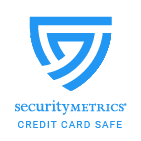Top 5 Use Cases of Quack AI (Q) On-Chain That Could Revolutionize DeFi Analytics
Why Trust BTCC
Introduction
Decentralized Finance (DeFi) is reshaping the blockchain space. Moving cryptocurrency from mere digital currency to a technology-driven path. As the Web3 world is evolving, one major project leading the path to governance is Quack AI (Q) on-chain. Championing how decentralized autonomous organizations (DAOs) allocate funds, make decisions, vote, and handle cross-chain coordination.
Quack AI on-chain integrates multi-chain execution with its own AI agents for executions. Adopt audit-ready logs, token incentive model into the governance space.
In this piece, you’ll get to know the key distinguished features of Quack AI protocol including the “top 5 on-chain use cases” for the Q token. Also, you’ll discover how the protocol works, what to monitor, how it could impact DeFi analytics and DAOs operation.
Let’s dig further.

/ You can claim a welcome reward of up to 10,055 USDT\
1. What is quack AI On-chain and How the Q Token Functions
1.1 Quack AI On-Chain Overview
Quack AI (Q) is a multi-chain AI-driven governance protocol that automates decision-making, evaluation, voting using its AI agents for execution. Its AI agents analyze complex data – from multiple sources – using advanced intelligence mechanisms.
Quack AI works across blockchain such as Ethereum, BNB Chain, TON, Arbitrum, Metis, and other EVM-compatible networks. It targets DAOs, protocols, real-world asset (RWA) managers.
1.2 Tokenomics and Utility of the Q Token
The native token $Q powers the ecosystem
| Metric | Value (2025) |
| Price (USD) | ~$0.0162 |
| Maximum Supply | 10B Q |
| Total Supply | 10B Q |
Other facts:
- Allocation: Community and Ecosystem ~79% of supply, investors/advisors ~11%, team ~10%.
- Utility: Stake Q tokens to back AI agents, governance rights, revenue-sharing for protocol contributors.
2. Use Case #1: Automated Proposal Evaluation and Execution
2.1 Governance Bottle in Traditional DAOs
Many DAOs are deficient in accurate decision-making, participation rates and biases. For most DAOs, retail traders are cheated at the expense of whales – who mostly enjoy preference. AI agents address this by giving equal access and opportunity to all levels of traders/investors. Its AI reads, assesses, summarizes proposals, recommends votes and fairly executes cross-chain transactions automatically.
2.2 How the On-Chain Mechanic Works
- Proposal submitted by the DAO → Threshold fulfilled → Analysis Conducted by Quack AI Agent (treasury, risk, SRM)
- The agent drafts the report, give a score, publishes the report on-chain
- Q token stakers can delegate to the agent or vote manually
- Once confirmed, the “execution router” triggers the transactions in the appropriate chain(s).
2.3 Why This Matters for DeFi and Governance Analytics
Faster execution, reduced human biasness, transparent audit. This results in new and accurate data flows, which aids analytics teams in handling better signals.
Register on BTCC for top-notch trading experience and enjoy Sign-up bonus now.
3. Use Case #2: Cross-Chain Governance and Multi-Protocol Coordination
3.1 The Cross-Chain Challenge
Prior, DeFi protocols operate in isolation -Ethereum, BNB Chain, Arbitrum, Metis, etc. With Quack AI interpolate layer that allows governance agents to operate across chains. This halts governance fragmentation.
3.2 Real-World Implementation
Users can submit proposals on accepted chains, the agent vet and execute to another chain ( e.g Arbitrum → Ethereum). Data is transparent and interoperable.
It’s reported that 40+ projects across 7+ chains have integrated Quack AI. More chains are expected to come on board with time.
3.3 implementation for On-Chain Analytics
This opens a new wave of metrics for traders and analysts to access. Ease cross-chain transactions, vote delegation, agent execution time. This provides new data sets or signals for strategic building.
/ You can claim a welcome reward of up to 10,055 USDT\
4. Use Case #3: Stake and Delegate AI Agents for Passive Governance Participation
4.1 The Token Holder Challenge
Quack AI aids passive Q token holders who stake their holdings, to delegate activities to AI Agents based on their instruction.
4.2 The Agent Delegation Mechanism
- User stakes Q → chooses agent ( either treasury, ecosystem growth, risk-averse)
- Agent votes under a transparent system
- The system rewards with Q Token for active participation
This model creates level ground for both active and passive traders to benefit from the system. Rewards correspond to impact. Similarly, malicious or lazy agents are penalised by the system.
4.3 Why This Feature Strengthens Token Value
Since nothing is hidden and governance is accessible to all levels of users, thus, Q token demands would be widened. Bringing in more users. Making the platform accessible, increase participation, strengthen the protocol analytics signals (delegate counts, on-chain pings, Q token staking ratio).
5. Use Case #4: Audit- Ready Treasury and Reward Automation
5.1 Treasury Transparency Problem
Since several protocols fail to create transparent, real-time transactions tracking flows, reward distributions and governance expenditures.
5.2 Quack AI’s Automation Solution
Quack AI automates activities with on-chain logs and timestamps. A section of its modules permit agents to trigger flows once a proposal passes. Such as reward, distributions, airdrops, vesting releases, venture grants.
5.3 Analytics Edge
Since the protocol can access several autonomous data per time, analysts can track flows. Also, new sources of on-chain data are created such as treasury motion graphs, grant distributions, and reward token flows.
6. Use Case #5: Real-World Asset (RWA) Governance and Compliance
6.1 The RWA Governance Opportunity
Adoption of Real-world assets (like real estate, commodities, gold) grow in web3, proper governance management – compliance, regulatory – is imperative. Quack AI bridges this loophole.
6.2 How Quack AI Positions For It
Quack AI allows regulated asset-backed protocols to use its AI governance stack. This is stated in its roadmap as RWA compliance platform.
Source: Quack AI Whitepaper
6.3 Why This Use Case Could Create Long-Term Value
Since RWAs have institutional support, protocols serving them tend to show higher stability and wide investment. Q token is meant to benefit as Quack AI becomes the backbone of RWA governance flows. More utility, demand surge, volume boost and price shoots.
/ You can claim a welcome reward of up to 10,055 USDT\
7. Step-By-Step Guide on How to Buy Quack AI (Q) Token and Tools for On-Chain Analytics
7.1 Purchasing the Q Token
- Select a supported exchange such as Binance, Gate
- Deposit funds (USDT, ETH, BNB)
- Find trading pairs and place order (Q/USDT, Q/ETH)
- Withdraw and Store in a safe wallet (MetaMask, TrustWallet) or BTCC wallet
- Stake (optional)
7.2 Tools for Monitoring On-Chain Metrics
- Protocol dashboards displaying Q token staking ratio, treasury flows, delegated agents.
- Platforms like Dape.ai or TokenRadar for social-sentiment and governance flows.
- Use on-chain explorers to track agent actions, flows, execution, etc
7.3 Important Considerations
- Verify contract address before interacting with a token
- Use specialized educational guidelines offered by BTCC Academy to understand market trends, risk, on-chain data interpretation.
8. What to Watch and Risk Factors
| Signal | Why It Matters | Threshold to Monitor |
| Agent Adoption Growth | More AI Agents = deeper ecosystem utility | Monthly agent count ↑ 10%+ |
| Q Token Staking / Delegation Ratio | High stake means token utility and lock-in | > 40% of circulating supply staked |
| Cross-Chain Integration Count | Shows multi-chain traction | Number of chains supported ≥ 10 in 2025 |
| Token Unlock Schedules | Unlocked tokens may pressure price | Major unlock > 10% supply in short term |
| Competitive AI-Governance Protocols | New entrants may capture share | New protocols announced in same space |
Key risk signal: Sudden hype without execution, token dilution, regulatory scrutiny of AI-governance layer, and dependency on DAOs participants.
9. FAQs on Quack AI On-Chain Protocol
Q1. What is Quack AI on-chain?
Quack AI is a blockchain infrastructure layer that integrates AI-powered governance agents, cross-chain execution and staking mechanisms for DAOs and protocols.
Q2. How many chains is Quack AI integrated with?
So far reports say it’s 7 chains (Ethereum, BNB Chain, Arbitrum, Metis, DuckChain etc) and over 40 protocols.
Q3. When did Q token launch and where to buy it?
TGE was September 02, 2025. You can buy Q token on Binance, Gate.io
Q4. Is Quack AI good for DeFi Analytics and governance?
Yes. Quack AI is suitable for tracking governance flows, funds monitoring, and DAOs participation.
Q5. Can I stake Quack AI (Q) token?
Yes. You can stake your Q token to participate in governance and get rewards up to 40% APY
/ You can claim a welcome reward of up to 10,055 USDT\
Conclusion
Quack AI (Q) is here for traders, analysts, and long-term builders who want to bridge AI + DeFi + governance. Operational across 7 chains and 40+ protocols so far. It promises to revolutionize DeFi analytics flows by leading in risk scoring and proposal analytics, market forecasting, oracle health monitoring, portfolio and treasury intelligence, and cross-chain governance.
These use cases can be layered into analytics dashboards, trading algorithms, fund strategies, and even retail UI tools to increase transparency and empower smarter decisions. The use cases point that Q token may be valuable beyond governance coins.
Always keep yourself informed and ahead of the blockchain curve, market insight and get the best of free trading resources at BTCC Academy to sharpen your trading strategy.
How to Trade Crypto on BTCC?
This brief instruction will assist you in registering for and trading on the BTCC exchange.
Step 1: Register an account
The first step is to hit the “Sign Up” button on the BTCC website or app. Your email address and a strong password are all you need. After completing that, look for a verification email in your inbox. To activate your account, click the link in the email.

Step 2: Finish the KYC
The Know Your Customer (KYC) procedure is the next step after your account is operational. The main goal of this stage is to maintain compliance and security. You must upload identification, such as a passport or driver’s license. You’ll receive a confirmation email as soon as your documents are validated, so don’t worry—it’s a quick process.

Step 3. Deposit Funds
After that, adding money to your account is simple. BTCC provides a range of payment options, such as credit cards and bank transfers. To get your money into your trading account, simply choose what works best for you, enter the amount, and then follow the instructions.
- Fiat Deposit. Buy USDT using Visa/Mastercard (KYC required).
- Crypto Deposit. Transfer crypto from another platform or wallet.

Step 4. Start Trading
If you wish to follow profitable traders, you might go for copy trading, futures, or spot trading. After choosing your order type and the cryptocurrency you wish to trade, press the buy or sell button. Managing your portfolio and keeping track of your trades is made simple by the user-friendly interface.

Look more for details: How to Trade Crypto Futures Contracts on BTCC
BTCC FAQs
Is BTCC safe?
Based on its track record since 2011, BTCC has established itself as a secure cryptocurrency exchange. There have been no reports of fraudulent activity involving user accounts or the platform’s infrastructure. By enforcing mandatory know-your-customer (KYC) and anti-money laundering (AML) procedures, the cryptocurrency trading platform gives consumers greater security. For operations like withdrawals, it also provides extra security features like two-factor authentication (2FA).
Is KYC Necessary for BTCC?
Indeed. Before using BTCC goods, users must finish the Know Your Customer (KYC) process. A facial recognition scan and legitimate identification documents must be submitted for this process. Usually, it is finished in a few minutes. This procedure has the benefit of strengthening the security of the exchange and satisfying legal requirements.
Because their accounts will have a lower daily withdrawal limit, those who do not finish their KYC are unable to make deposits. It should be noted that those who present a legitimate ID without a facial recognition scan will likewise have restricted withdrawal options.
Is There a Mobile App for BTCC?
Indeed. For users of iOS and Android, BTCC has a mobile app. The exchange’s website offers the mobile app for download. Since both the web version and the mobile app have the same features and capabilities, they are comparable.
Will I Have to Pay BTCC Trading Fees?
Indeed. BTCC levies a fee for trade, just like a lot of other centralised exchanges. Each user’s VIP level, which is unlocked according to their available money, determines the different costs. The BTCC website provides information on the charge rates.
Can I Access BTCC From the U.S?
You can, indeed. According to its website, BTCC has obtained a crypto license from the US Financial Crimes Enforcement Network (FinCEN), which enables the cryptocurrency exchange to provide its services to investors who are headquartered in the US.
According to BTCC’s User Agreement document, its goods are not allowed to be used in nations and organisations that have been sanctioned by the United States or other nations where it has a licence.
BTCC Guide:
- How to Trade Crypto Futures Contracts on BTCC
- BTCC Guide-How to Deposit Crypto on BTCC?
- What is Crypto Futures Trading – Beginner’s Guide
- What is Leverage in Cryptocurrency? How Can I Trade at 100X Leverage?
- BTCC Review 2024: Best Crypto Futures Exchange
Crypto Buying Guides:
- How To Buy Bitcoin (BTC)
- How To Buy Picoin
- How To Buy Ethereum (ETH)
- How To Buy Dogecoin (DOGE)
- How To Buy Pepe Coin (PEPE)
- How To Buy Ripple (XRP)
Crypto Prediction:
- Ethereum (ETH) Price Prediction 2024, 2025, 2030 — Will ETH Reach $10,000?
- Ethereum Price Prediction 2024, 2025, 2030: How High Can ETH Go in 2024?
- Bitcoin (BTC) Price Prediction 2024, 2025, 2030 — Is BTC a Good Investment?
- Ripple (XRP) Price Prediction 2024, 2025, 2030 — Will XRP Reach $1 After SEC Lawsuit?
- Pi Coin Price Prediction 2024,2025,2030 — Is Pi Coin a Good Buy?
- Pepe (PEPE) Price Prediction 2024, 2025, 2030 – Will PEPE Reach $1

Scan to download
